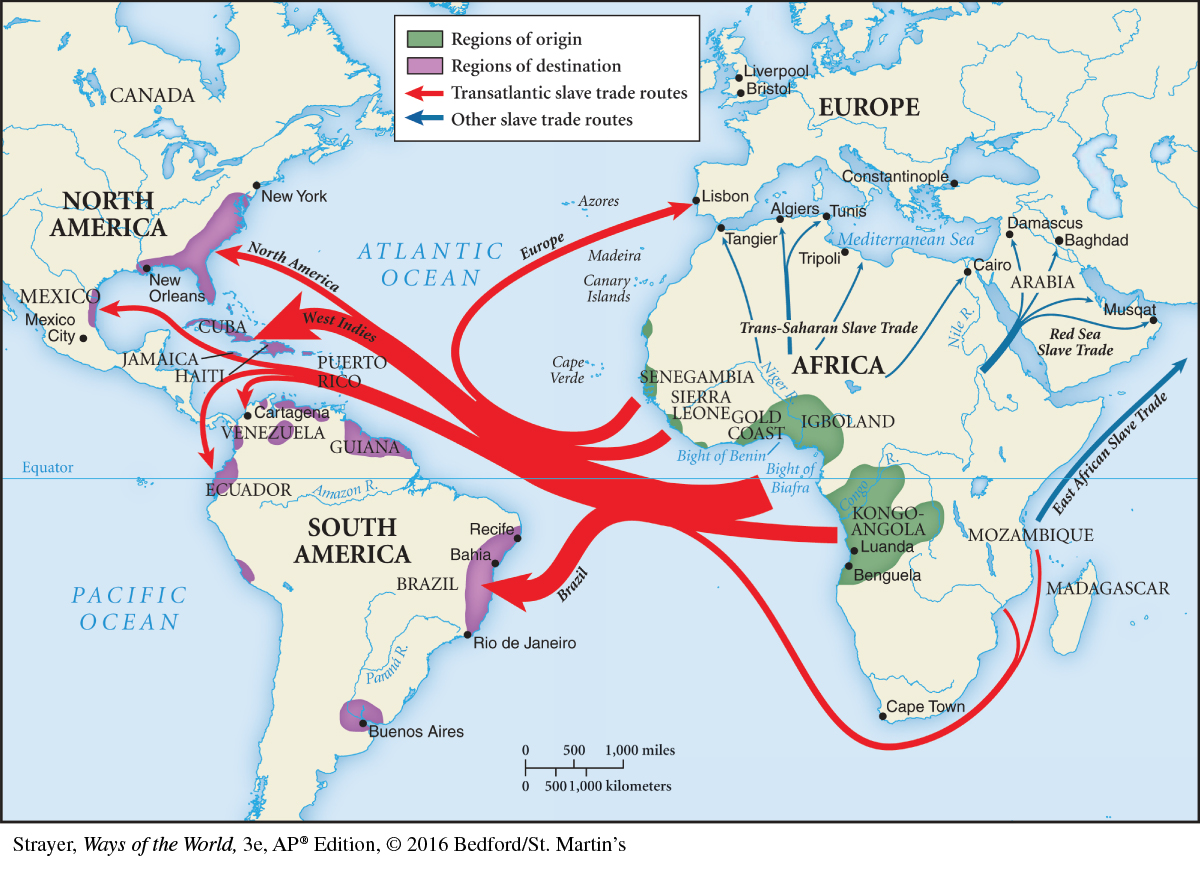Commerce in People: The Atlantic Slave Trade
Of all the commercial ties that linked the early modern world into a global network of exchange, none had more profound or enduring human consequences than the Atlantic slave trade. Between 1500 and 1866, this trade in human beings took an estimated 12.5 million people from African societies, shipped them across the Atlantic in the infamous Middle Passage, and deposited some 10.7 million of them in the Americas, where they lived out their often-
AP® EXAM TIP
Look at the map above and take note of the origins and destinations of the African slave trade in this era, as they may appear on the AP® exam. Also know that the demographic effects of the African slave trade on both sides of the Atlantic are “must know” information for the AP® course.

Beyond the multitude of individual tragedies that it spawned — capture and sale, displacement from home cultures, forced labor, beatings and brandings, broken families — the Atlantic slave trade transformed all of its participants. Within Africa itself, that commerce thoroughly disrupted some societies, strengthened others, and corrupted many. Elites often enriched themselves, while the slaves, of course, were victimized almost beyond imagination.
In the Americas, the slave trade added a substantial African presence to the mix of European and Native American peoples. This African diaspora (the global spread of African peoples) injected into these new societies issues of race that endure still in the twenty-first century. It also introduced elements of African culture, such as religious ideas, musical and artistic traditions, and cuisine, into the making of American cultures. The profits from the slave trade and the forced labor of African slaves certainly enriched European and Euro-American societies, even as the practice of slavery contributed much to the racial stereotypes of European peoples. Finally, slavery became a metaphor for many kinds of social oppression, quite different from plantation slavery, in the centuries that followed. Workers protested the slavery of wage labor, colonized people rejected the slavery of imperial domination, and feminists sometimes defined patriarchy as a form of slavery.